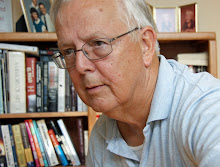Infinity in the Palm of Your Hand:
Fifty Wonders That Reveal an Extraordinary Universe
214 pp. Diversion Books
Fifty Wonders That Reveal an Extraordinary Universe
214 pp. Diversion Books
By Marcus Chown
Reviewed by Bob Sanchez
Originally published in the Internet Review of Books
Originally published in the Internet Review of Books
The very fact of the universe’s existence poses a profound puzzle. Answers used to be as simple as Genesis, where God placed mankind at the center of everything, and the daily sunrises and sunsets made Earth’s centrality in the heavens self-evident.
Then telescopes opened our eyes, and now we know we are a minuscule blue dot in a Universe of endless complexity and wonder. At least two trillion galaxies originated in one unimaginably small space, and now they race away at increasing speeds. Dark matter and dark energy envelop everything we see and hold it all – us all – together. That includes atoms, the building blocks of everything. Atoms are mostly empty space, with relatively vast distances between their nuclei and the electrons whizzing around them.
Author and radio astronomer Marcus Chown brings these facts to our attention with clarity and a light touch. For example, he states that the moon “is perpetually plummeting towards the earth,” and that “pound for pound … Jupiter’s pizza-like moon, Io,” generates more heat than the sun. He also points out in his chapter Please Squeeze Me that if you could squeeze all the empty space from our atoms, the entire human race could fit in the space of one very heavy sugar cube. “We are all ghosts,” he writes, 99.9999999999999 percent empty space. (He also writes that we are one-third mushroom, so which are we, Mr. Chown, ghosts or fungi?)
When he gives public talks, he shows off his pet mosquito named Terry, which he keeps in a jam jar. He says that if he could magically remove all the bug’s electrons, leaving only the positively charged nuclei, the resulting explosion would cause a global mass extinction. (And to think we’ve all been fretting about global warming!)
As the subtitle suggests, this book describes fifty wondrous phenomena of the Universe. Topics range from the indivisibly small to the unknowably vast. No chapter exceeds a half-dozen pages, and readers will never feel bogged down in convoluted or technical language. Chapter titles alone give away the flavor of the book: Hex Appeal, Pocket Universe, Credit Card Cosmos, and Loopy Liquid are a few of them.
Make no mistake, though. No amount of clear, enjoyable writing will simplify quantum physics enough for some of us – okay, for me. The same particle can exist in two places at once? The concept makes my brain feel like empty space.
This popular-science overview of the Universe is perfect for lay readers with inquiring minds.











